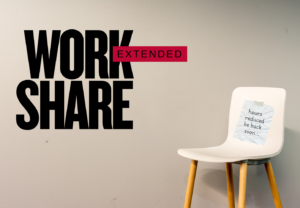
Ten Steps to Implementing Personalized Payroll Benefits: Tailoring Packages for Lifestyle, Health, Skills, and Security
In today’s competitive job market, attracting and retaining top talent requires more than just offering a competitive salary. A comprehensive benefits package can be a game-changer, but traditional one-size-fits-all benefits are no longer cutting it.
Personalized benefits allow employees to tailor their benefits packages according to their individual needs. Whether it’s lifestyle perks, health and wellness options, skills development, or security measures, giving employees the flexibility to choose can significantly increase their job satisfaction and loyalty. These could be broadly categorized as:
- Lifestyle Perks: Options like gym memberships, childcare vouchers, or transportation allowances can make a big difference in employees’ daily lives.
- Health and Wellness: Comprehensive healthcare plans, mental health support, and wellness programs ensure your team stays healthy and motivated.
- Skills Development: Offering training programs, workshops, and courses helps employees grow their skills and advance their careers.
- Finance Security Measures: From financial planning services to retirement plans, ensuring financial security is crucial for peace of mind.
Quick Statistics
- 78% of employees say they would stay with their employer longer if they had flexible benefits options
- 60% of employees are more likely to accept a job offer with personalized benefits
- 55% of workers believe that personalized benefits would improve their overall well-being
- 70% of millennials prioritize benefits over salary when choosing a job
- 65% of employees feel that their current benefits do not meet their needs
- 50% of HR professionals report an increase in employee satisfaction with personalized benefits
- 45% of companies have seen a reduction in turnover rates after implementing flexible benefits
- 80% of employees value health and wellness benefits as part of their compensation package
- 62% of employees are interested in benefits that support skills development and career growth
- 40% of workers would trade a higher salary for better benefits tailored to their lifestyle
Step-by-Step: Implementing Flex Benefits
By implementing a flexible benefits system, employers can create a more satisfied and dedicated workforce. It’s not just about meeting the needs of today’s employees but also about preparing your organization for the future. When employees feel valued and supported, they are more likely to stay and contribute positively to your company’s success.
- Assess Employee Needs: Conduct surveys or focus groups to understand the diverse requirements and preferences of your workforce.
- Research Benefit Options: Explore various benefit options including health, lifestyle, skills development, and security to create a comprehensive list.
- Set a Budget: Determine the financial limits for your benefits program to ensure it is sustainable.
- Create a Flexible Benefits Policy: Develop a policy outlining the types of benefits available, the allocation process, and eligibility criteria.
- Select a Benefits Platform: Choose a reliable technology platform to manage and administer the benefits program efficiently.
- Communicate with Employees: Clearly explain how the flexible benefits system works and its advantages. Use various communication channels to reach all employees.
- Provide Education and Support: Offer resources and guidance to help employees make informed choices about their benefits.
- Implement Gradually: Roll out the flexible benefits program in phases to ensure a smooth transition and address any issues promptly.
- Monitor and Adjust: Regularly review the program’s effectiveness and make necessary adjustments based on employee feedback and changing needs.
- Evaluate Success: Measure the impact of the flexible benefits program on employee satisfaction, retention, and productivity to determine its success and areas for improvement.
Quick Facts
- Personalized payroll benefits can increase employee satisfaction and retention
- Health and wellness programs in benefits packages can reduce absenteeism and increase productivity (National Library of Medicine)
- Skills development opportunities in benefits packages can enhance employee performance and career growth
- Employees are more likely to engage with and appreciate benefits that are relevant to their individual circumstances
- Personalized benefits can address diverse workforce needs, including those of different age groups and life stages
- Flexible benefits systems allow employees to choose benefits that best suit their personal needs
Comparing Collective vs. Personalized Payroll Benefits
| Benefit Type | Collective Payroll Benefits | Personalized Payroll Benefits |
|---|---|---|
| Flexibility | Low | High |
| Employee Satisfaction | Moderate | High |
| Cost Control | High | Moderate |
| Administrative Complexity | Low | High |
| Customization | None | High |
| Retention of Top Talent | Moderate | High |
Overcoming Challenges in Implementing Personalized Payroll Benefits
Personalizing payroll benefits can be immensely rewarding but is not without its challenges. Customizing benefits to cater to diverse employee needs requires a significant shift from traditional, one-size-fits-all benefits packages. Here’s a closer look at some of the primary hurdles and strategies to overcome them.
1. Navigating Varying Labor Laws and Regulations One of the first challenges companies face is the complexity of complying with different labor laws and regulations across regions. Variability in legal requirements for benefits such as maternity and paternity leave, healthcare stipends, or retirement packages can make uniform implementation difficult. To navigate this, partnering with a knowledgeable legal team or compliance specialist is crucial. They can help tailor benefits that align with regional laws while meeting employee expectations.
2. Technological Integration Implementing a flexible benefits system necessitates robust technological infrastructure. Many legacy HR and payroll systems are not equipped to handle personalized benefit plans. Investing in modern, adaptable payroll software and platforms that support a range of benefit options can streamline the process. Cloud-based solutions offer scalability and flexibility, allowing seamless adjustments to benefit offerings as policies and employee needs evolve.
3. Communication and Awareness Employees may initially be unaware or confused about the new personalized benefits. Transparent communication and comprehensive education are vital. Hosting informational sessions, creating detailed documentation, and offering personalized consultations can help employees understand their options and make informed decisions. Using user-friendly digital portals where employees can easily explore and customize their benefits can also enhance engagement.
4. Balancing Costs Providing a wide array of personalized benefits can be cost-prohibitive for some organizations. A strategic approach to balancing cost and employee satisfaction involves analyzing which benefits employees value most and focusing on those. Conduct regular surveys to gauge employee needs and preferences, allowing for informed decisions on which benefits to prioritize, scale back, or eliminate.
5. Administrative Complexity Managing personalized benefits programs introduces a level of administrative complexity that traditional plans do not. Efficiently handling employee expense allowances, reimbursements, and benefit expense cards requires meticulous administration. Leveraging automated payroll and HR systems can reduce the burden on administrative staff, ensuring accurate and timely processing of benefits.
Despite the challenges, personalized payroll benefits can significantly enhance employee satisfaction and attract top talent. By addressing these hurdles strategically, businesses can create a responsive and rewarding benefits program suited to the needs of today’s diverse workforce.
Expert help from Pivotal’s Benefits and Payroll Experts can help you manage the hurdles. Contact Pivotal for more information.


 Our HR solutions experts can recommend the right mix of HR outsourced services to make your entry into Canada easier.
Our HR solutions experts can recommend the right mix of HR outsourced services to make your entry into Canada easier.  Pivotal Employment Management Services co-hires your workforce, simplifying entry of your business in Canada.
Pivotal Employment Management Services co-hires your workforce, simplifying entry of your business in Canada. 

















